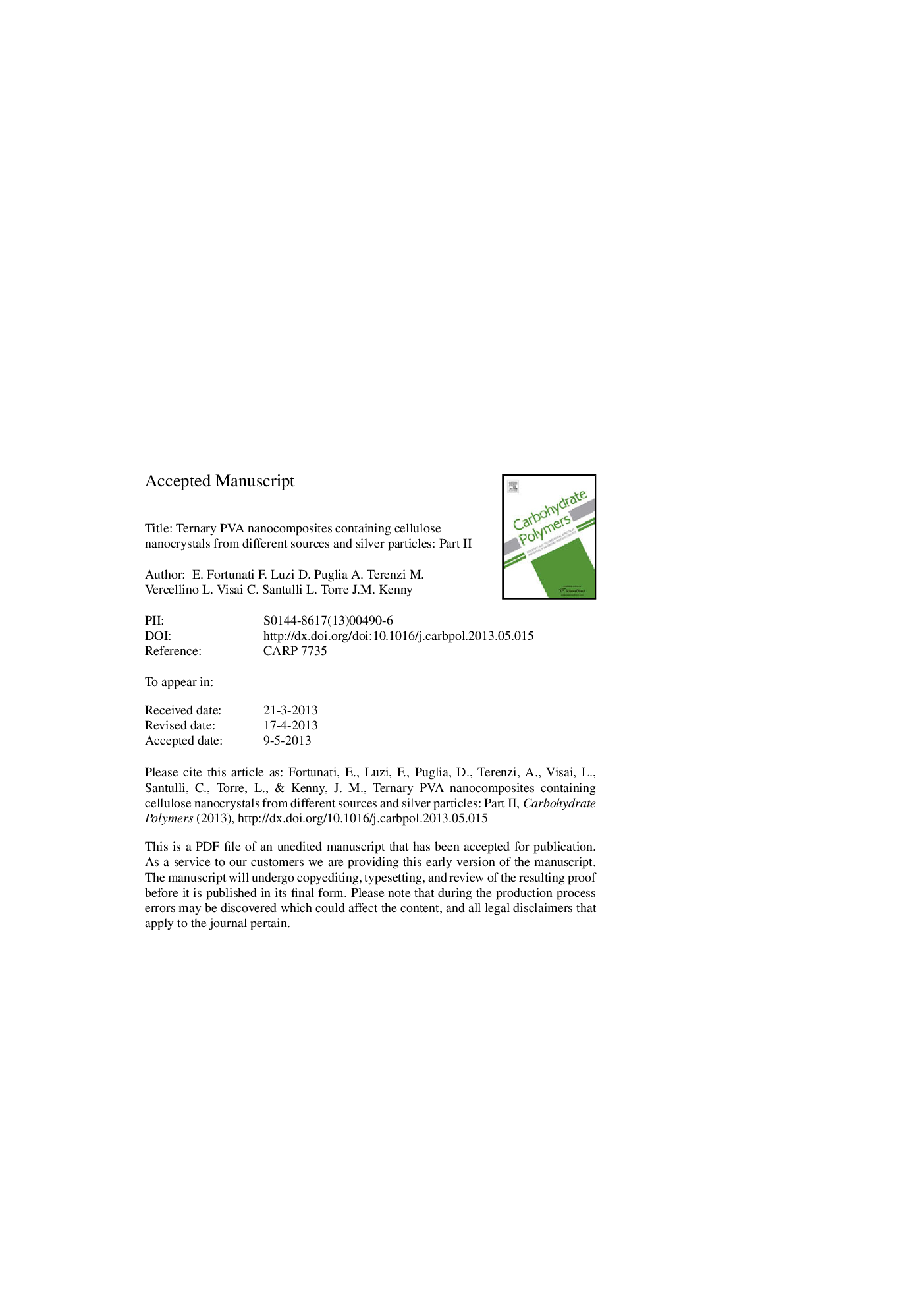| Article ID | Journal | Published Year | Pages | File Type |
|---|---|---|---|---|
| 10597174 | Carbohydrate Polymers | 2013 | 37 Pages |
Abstract
Cellulose nanocrystals (CNC) extracted from three different sources, namely flax, phormium, and commercial microcrystalline cellulose (MCC) have been used in a polyvinyl alcohol (PVA) matrix to produce anti-bacterial films using two different amounts of silver nanoparticles (0.1Â wt% and 0.5Â wt%). In general, CNC confer an effect of reinforcement to PVA film, the best values of stiffness being offered by composites produced using phormium fibres, whilst for strength those produced using flax are slightly superior. This was obtained without inducing any particular modification in transition temperatures and in the thermal degradation patterns. As regards antibacterial properties, systems with CNC from flax proved slightly better than those with CNC from phormium and substantially better than those including commercial MCC. Dynamic mechanical thermal analysis (DMTA) has only been performed on the ternary composite containing 0.1Â wt% Ag, which yielded higher values of Young's modulus, and as a whole confirmed the above results.
Keywords
Related Topics
Physical Sciences and Engineering
Chemistry
Organic Chemistry
Authors
E. Fortunati, F. Luzi, D. Puglia, A. Terenzi, M. Vercellino, L. Visai, C. Santulli, L. Torre, J.M. Kenny,
